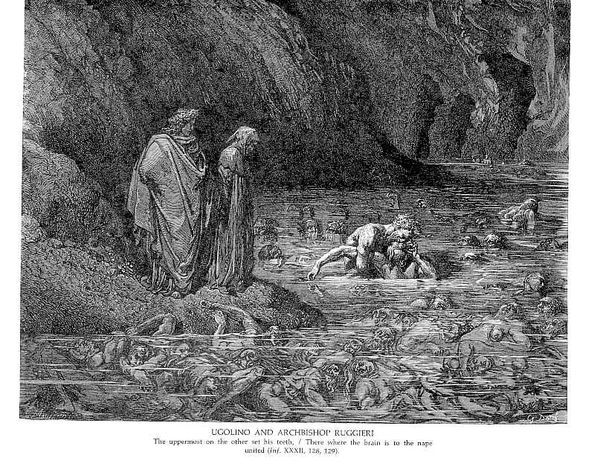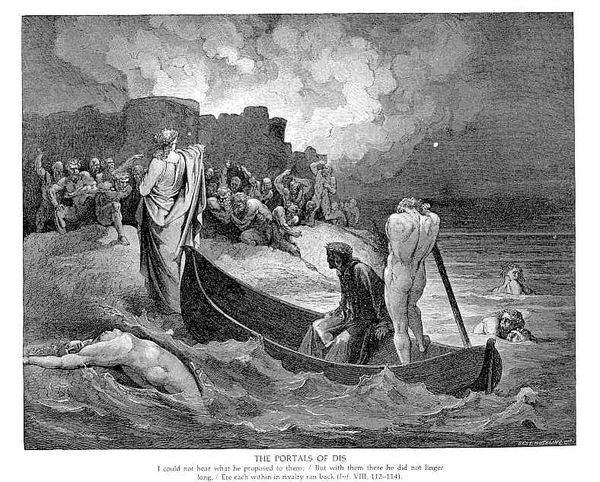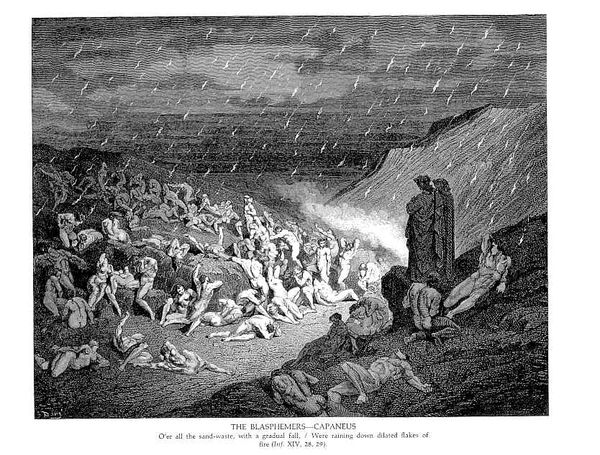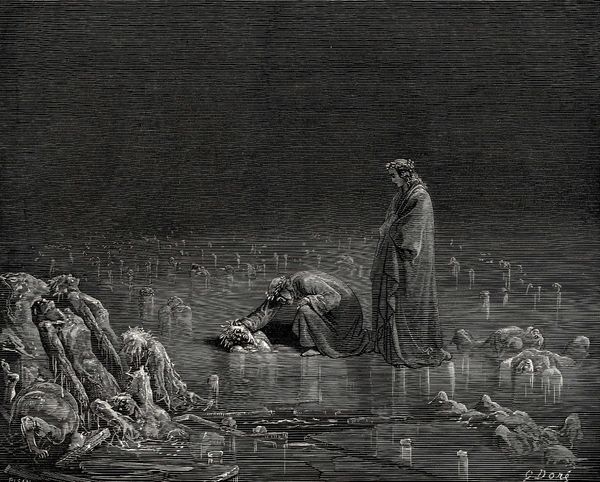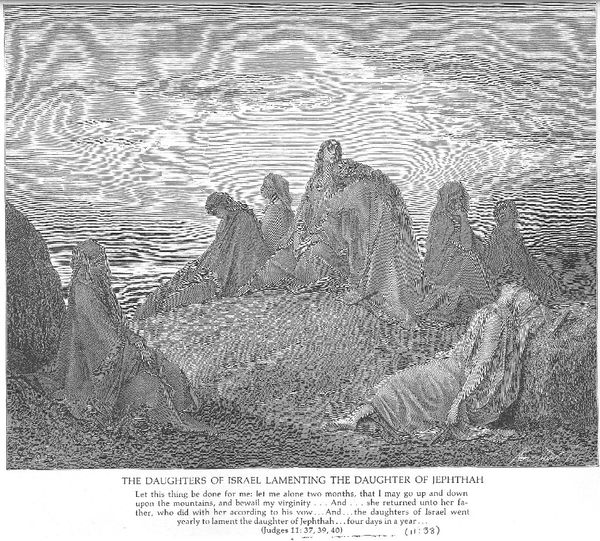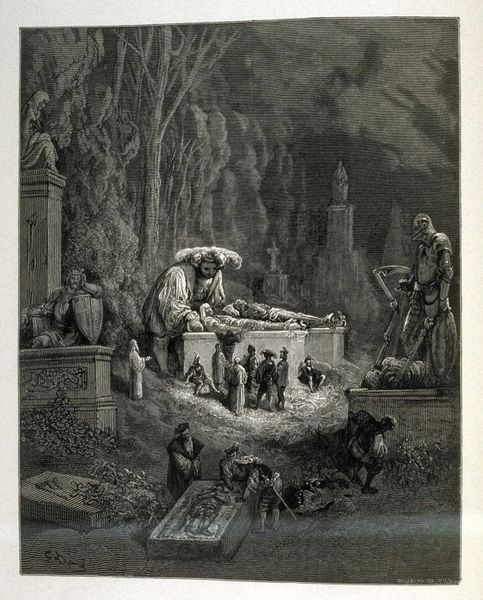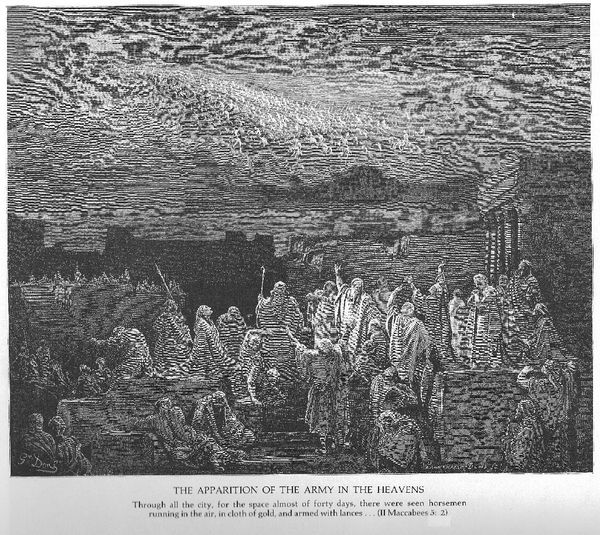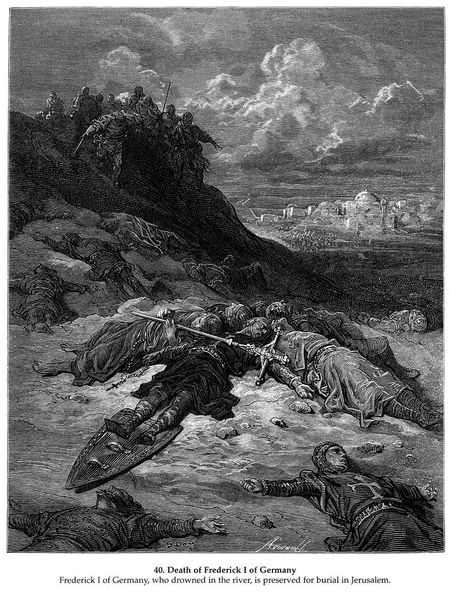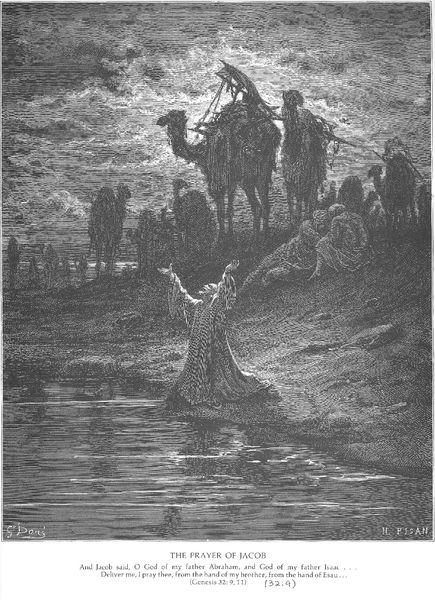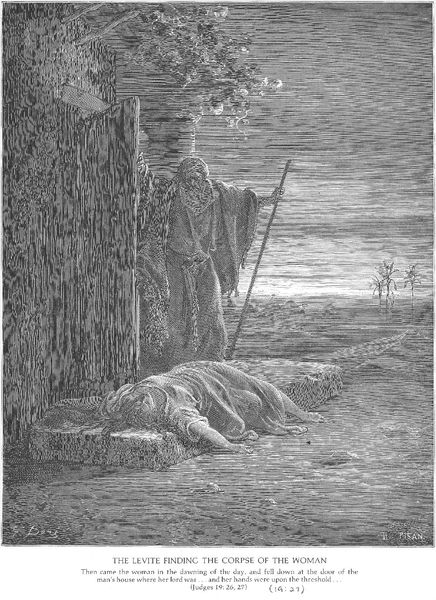
drawing, print, photography, ink, charcoal, engraving
#
drawing
#
allegory
#
narrative-art
# print
#
landscape
#
charcoal drawing
#
figuration
#
form
#
photography
#
ink
#
romanticism
#
line
#
charcoal
#
history-painting
#
charcoal
#
engraving
Copyright: Public domain
Gustave Doré made this engraving, "Traitors--Bocca Degli Abati", in the 19th century. It illustrates a scene from Dante's Inferno, where Dante and Virgil encounter the traitor Bocca in the frozen lake of Cocytus, the ninth circle of Hell. The image creates meaning through its stark contrasts and dramatic composition, evoking the torment and despair of the damned. The setting is hell, but we might also recognize the political turmoil of 19th-century Europe in this image. Dore was working during a time of massive social upheaval. The old feudal order was collapsing but new more democratic structures were emerging. Loyalty and betrayal are central themes. To fully understand Doré's work, we can consult literary sources like Dante's Inferno, historical accounts of the period, and critical analyses of Doré's artistic style and social context. The meaning of the artwork becomes clearer when we see it as deeply rooted in its specific social and institutional context.
Comments
No comments
Be the first to comment and join the conversation on the ultimate creative platform.

